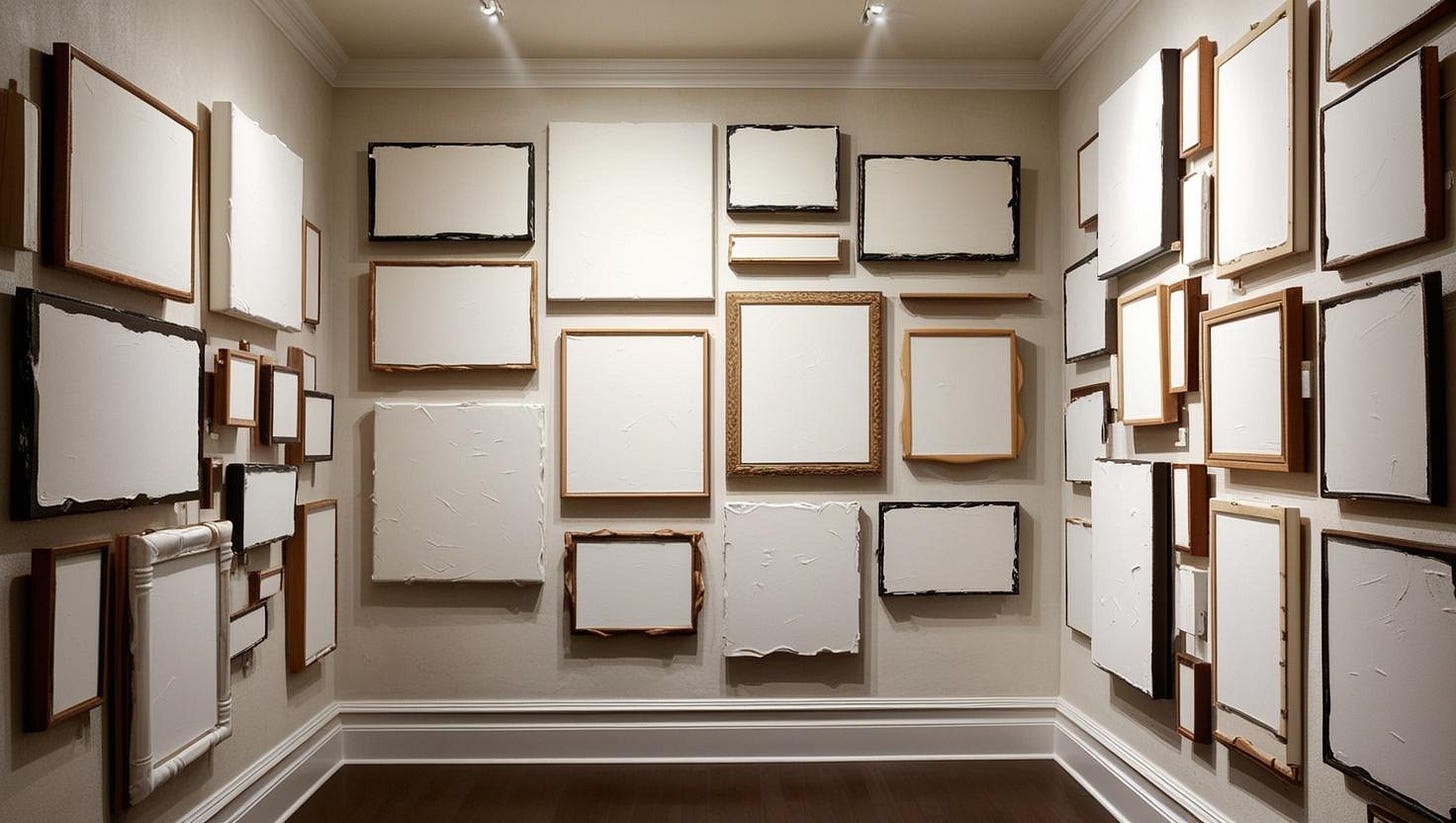The start of a new year is like pressing the reset button. It’s a chance to reflect on where you’ve been and map out where you’re headed.
If the idea of collecting art has ever crossed your mind, why not add it to your list of resolutions? You can mull over what to collect while you’re pretending to cut back on alcohol or avoiding a run in the rain.
Interestingly, the current market shift has tilted the scales in favour of buyers, creating a prime moment for new collectors. It’s a bit of a sweet spot, with more opportunities to own extraordinary pieces at accessible prices.
If your budget lands anywhere between £500 and £10,000, it's a great time to explore and start building a collection that’s uniquely yours, without diving into the stratospheric costs of blue-chip masterpieces.
Here are five recommendations to help you start your collection:
1. Visit galleries
Galleries are traditional yet essential spaces for discovering art within your budget.
Many galleries showcase works by both emerging and established artists at various price points and building relationships with gallery owners can be incredibly beneficial as they often have a keen eye for identifying valuable pieces within your budget.
By attending gallery openings and exhibitions regularly you can make connections. Not only will you see the artwork firsthand, but you'll also get to meet like-minded collectors and art professionals who can offer valuable advice and recommendations.
London galleries selling artworks at affordable price points:
2. Browse auctions
Auctions can be a thrilling way to acquire secondary market artworks, with previous ownership and exhibition history.
While major auction houses like Christie's, Sotheby's, Phillips and Bonhams may seem intimidating, they also hold smaller, more affordable sales that feature works at accessible price points. These sales often include an online component, making it easier for new collectors to participate. Additionally, there are auction platforms that operate entirely online, offering the same level of accessibility.
Research upcoming auctions, review the catalogues, and set a budget before participating. Watch out for hidden costs like buyer's premium and shipping fees, which can be added to the final hammer price.
Recommended online auction platforms:
3. Engage with artists directly
One of the most rewarding aspects of collecting art is building relationships with artists themselves. Attending degree shows, open studios, and artist talks can provide direct access to artists selling works within your budget.
Social media platforms like Instagram have also become powerful tools for discovering and engaging with artists. By following artists' journeys, you can gain deeper insights into their creative processes and upcoming projects.
Purchasing directly from artists not only supports them financially but also allows you to acquire works at potentially lower prices before they gain broader recognition.
Take a look at our previous Class of 2024 series to discover emerging artists from last year’s London degree shows. And subscribe for more posts like this coming your way soon!
4. Prints, editions and works on paper
For those new to collecting or working with limited budgets, prints, editions, and works on paper offer an excellent entry point. These pieces are typically more affordable allowing you to build a diverse collection without significant financial risk.
Both emerging and blue-chip artists create limited edition prints, providing a chance to add more established names to your collection without the astronomical prices.
Check out:
Avant Arte collaborates with leading contemporary artists to create limited edition works – from sculpture editions and works on paper, to NFTs and hand-finished silkscreen prints.
Blue Shop Cottage hosts a regular Works on Paper series, offering collectors a great opportunity to invest in emerging artists right at the start of their careers.
House of Voltaire commissions unique artworks, limited edition prints, and specially commissioned homewares. Prices for editions rise as items sell out, so buying early is key.
Circa runs a free public art program, funded through a circular model that involves selling limited edition works by their exhibiting artists.
5. Diversify
Diversity is key to building a well-rounded and resilient art collection. This means not only varying the types of art you collect—both unique works and limited editions—but also seeking works from artists of different backgrounds, cultures, and perspectives.
Diversifying your collection helps mitigate risks and increases the chances of acquiring pieces that appreciate in value. Additionally, a diverse collection reflects a broad appreciation for the vast landscape of contemporary art and demonstrates a commitment to supporting a wide range of voices and stories.
Embarking on your art collection journey with a relatively small budget is an exciting endeavour. We hope that with these recommendations you'll not only have the chance to discover valuable and inspiring pieces but also play a vital role in fostering the growth and success of artists.
What’s in your collection? Do you have more tips to share?









Engaging with artists directly is one of the most rewarding ways to collect. Especially with artists whom you might find as just emerging or underrepresented. It can create a real emotional bond with the work and keeps it alive. Because as the work keeps existing with you, the universe from which it emerged keeps evolving. Some pieces then become keys to something the artist will then build into a major branch of their work. But even if it doesn't then you were there as they were growing. I highly recommend that approach.
I like to receive the 3 rd point, visiting the artist..